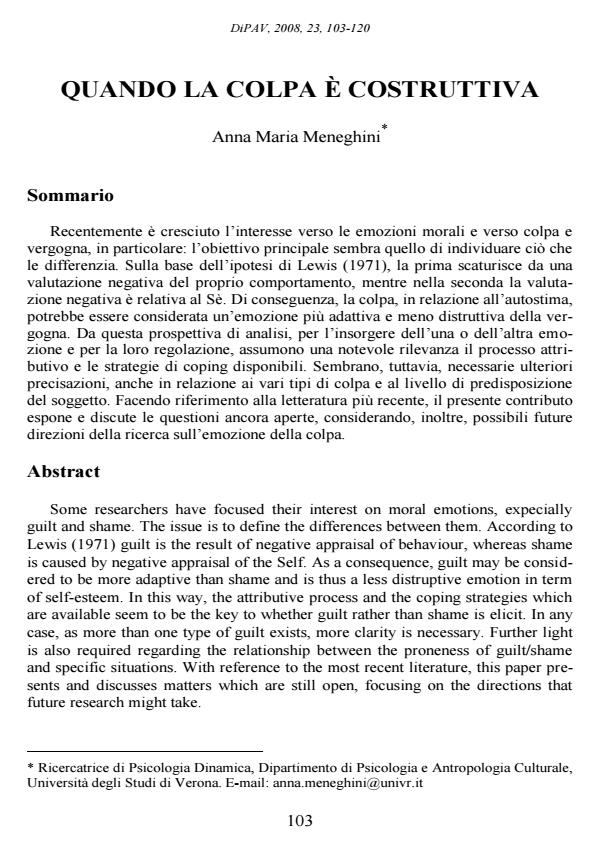Quando la colpa è costruttiva
Titolo Rivista DiPAV - QUADERNI
Autori/Curatori Anna Maria Meneghini
Anno di pubblicazione 2008 Fascicolo 2008/23 Lingua Italiano
Numero pagine 18 P. 103-120 Dimensione file 374 KB
DOI
Il DOI è il codice a barre della proprietà intellettuale: per saperne di più
clicca qui
Qui sotto puoi vedere in anteprima la prima pagina di questo articolo.
Se questo articolo ti interessa, lo puoi acquistare (e scaricare in formato pdf) seguendo le facili indicazioni per acquistare il download credit. Acquista Download Credits per scaricare questo Articolo in formato PDF

FrancoAngeli è membro della Publishers International Linking Association, Inc (PILA)associazione indipendente e non profit per facilitare (attraverso i servizi tecnologici implementati da CrossRef.org) l’accesso degli studiosi ai contenuti digitali nelle pubblicazioni professionali e scientifiche
Quando la colpa è costruttiva - Some researchers have focused their interest on moral emotions, expecially guilt and shame. The issue is to define the differences between them. According to Lewis (1971) guilt is the result of negative appraisal of behaviour, whereas shame is caused by negative appraisal of the Self. As a consequence, guilt may be considered to be more adaptive than shame and is thus a less distruptive emotion in term of self-esteem. In this way, the attributive process and the coping strategies which are available seem to be the key to whether guilt rather than shame is elicit. In any case, as more than one type of guilt exists, more clarity is necessary. Further light is also required regarding the relationship between the proneness of guilt/shame and specific situations. With reference to the most recent literature, this paper presents and discusses matters which are still open, focusing on the directions that future research might take.;
Anna Maria Meneghini, Quando la colpa è costruttiva in "DiPAV - QUADERNI" 23/2008, pp 103-120, DOI: